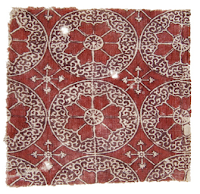Master’s in Archaeology from England
I am quickly going to do a small piece on what the master’s degree in archaeology would look like in England. This is for the aspirants who are looking to do their post-graduation from the UK and want an idea of what to look forward to. The postgraduate taught master’s degrees in England are usually one to two year long in duration when pursued full-time. Part time masters can be anywhere between two to four years long. There are also two types of master’s degrees in England - taught and research based. The research based one is more close to what we call MPhil in India and the taught degree is like the regular master’s where the course is taught by lecturers.
The structure of the course depends on the subject of the master’s. For instance, I studied MSc Environmental Archaeology, so as the title suggests all the course modules were related to/ centered around that particular topic. There are a vast range of options to choose from for all the semesters except a few compulsory/ core papers. The modules I studied included studying climatic changes - in Quaternary and in Holocene as two separate topics, geochemistry, micromorphology and its applications, issues and debates in archaeology, quantitative methods, field methods and experimental archaeology. These were taught over the duration of two terms and the third term was assigned to dissertations.
Similarly if someone is planning to opt for a master’s in medieval or classical or any other type of archaeology then their modules would be related to the particular specialization that they have selected. Most often than not, postgraduate taught degrees in the UK will be specializations.
Moving to the teaching part, most classes during my course were held in the format of seminars where we would be provided a reading list with questions to think about the previous day, followed by a discussion in the classroom the next day. Practicals were also a part of the teaching and the students were provided regular access to individual microscopes, archaeological samples and so on. Many-a-times subject specific experts were also invited to speak to us about certain modules like micromorphology for example. Wherever possible, we were taken out on the field to experience survey and examination methods first hand. During our dissertations, we had access to all the facilities available at the university to choose from. Consequently we also received training for handling instruments that we wanted to use for our data analysis.
The assessment is in the form of credits (most universities offer 180 credits in total) and upon the completion of the same with minimum 50% or above, a masters degree is awarded to the candidate. Although some universities may also have a 40% criteria for passing. For the course I enrolled in, there were no examinations of the sort that we have in India. There the assessment was based on writing critiques, making project reports after fieldwork and training, making presentations, writing essays and even appearing for a mock interview! We had this module for learning career skills where we were practically trained on creating an academic CV and for appearing in academic job/ fellowship/ doctoral interviews. So the mock interview and creating a CV were a part of the assessment for that module.
Basically the assessment format is designed to be relevant to the topic that you have chosen so that it is of practical value as well as contributes towards your personal development. I also want to add here that every student gets assigned a personal tutor at the beginning of the master’s program and that tutor reviews their progress throughout the course. They also help the students with any difficulties related to coursework and suggest ways in which they could be overcome. I personally found this approach really helpful in my professional development during my time over there.
I hope you find this information helpful. Do comment and post any other questions you might have.
Cheers,
Bhakti G



Comments
Post a Comment